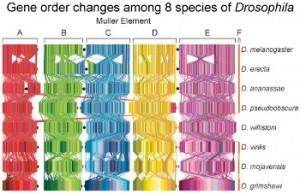Petascale Grids used to explore Evolutionary History
Researchers at Georgia Tech, the University of South Carolina, and the Pennsylvania State University have been employing Petascale Supercomputing Grids to analyze the evolution of organelles among organisms and study the evolutionary history.

We’ve all known for several years now that the chimpanzees also share 96 % of the human DNA. The current computing technology can help us with research that shows how closely humans and chimps are related. But it just fails short of telling us how we’re related. Researchers are employing the new Petascale computing technology for achieving that.
The Genome Rearrangements Analysis under Parsimony and other Phylogenetic Algorithms or GRAPPA project, has been using huge clusters of computers ranging as high as 500 processors to analyze the evolution of organelles such as chloroplasts and mitochondria.
The project receives a $1 million grant from the National Science Foundation, which has helped in sustaining the research work carried out by genetics researcher Stephen Schaeffer along with computational science researchers David Bader of Georgia Tech and Jijun Tang of the University of South Carolina.
Researcher Bader explains that for the first version of GRAPPA, eight years ago it took an hour and a half to run a problem involving the chloroplasts of a dozen species of bluebell flowers on a 512 processor linux cluster. Today that same problem could be solved in a more biologically meaningful way taking less than five minutes on his laptop, thanks to the improvements in the algorithm of the GRAPPA code and faster processors.
The project envisages to make use of the IBM BlueWaters resource to solve the immensely challenging compute and data intensive applications of this kind.
